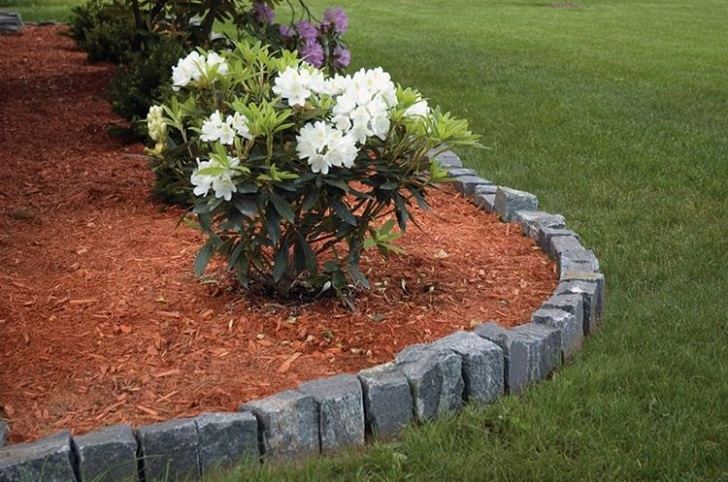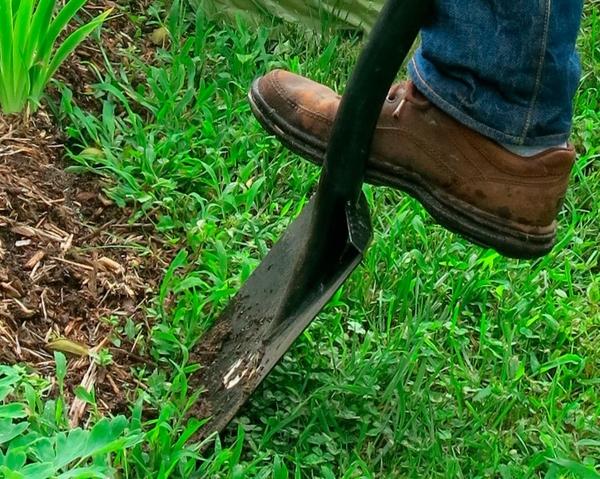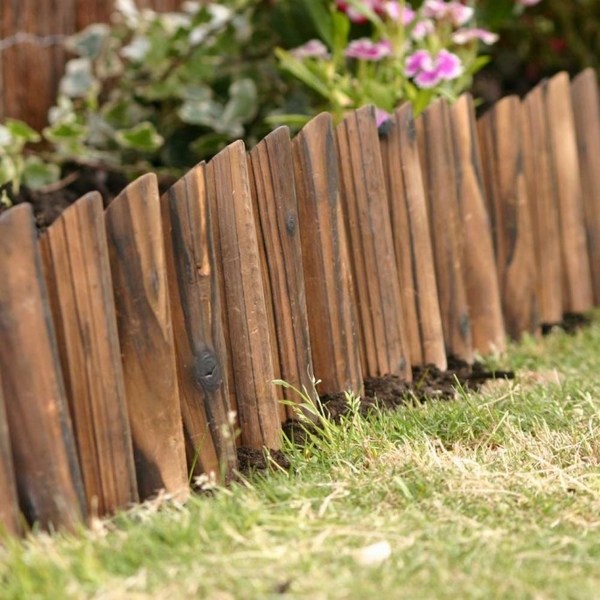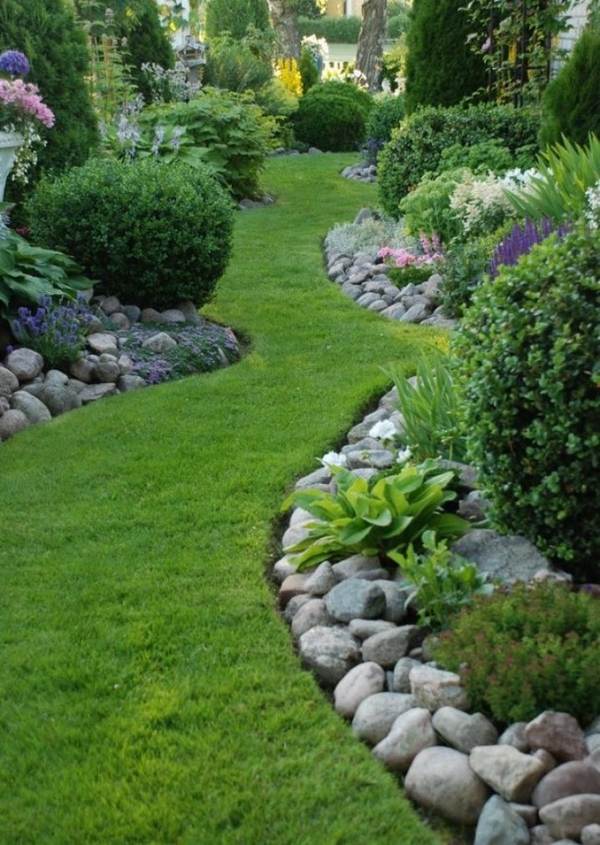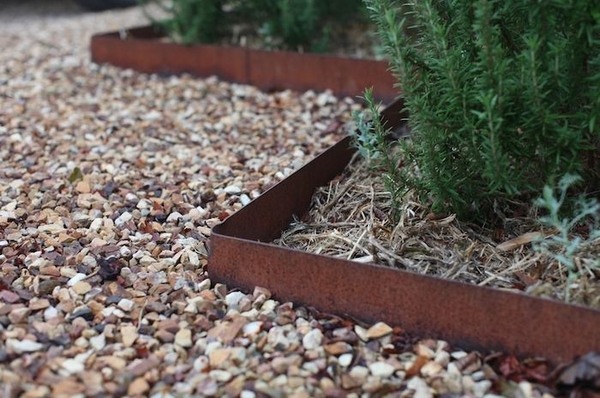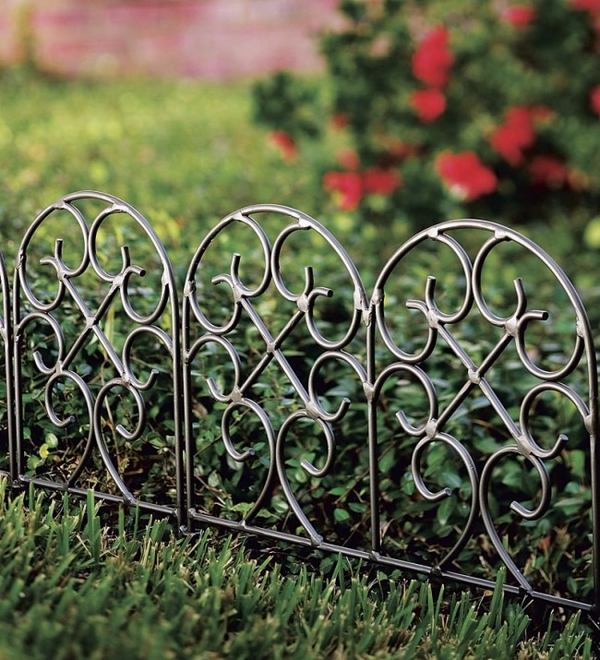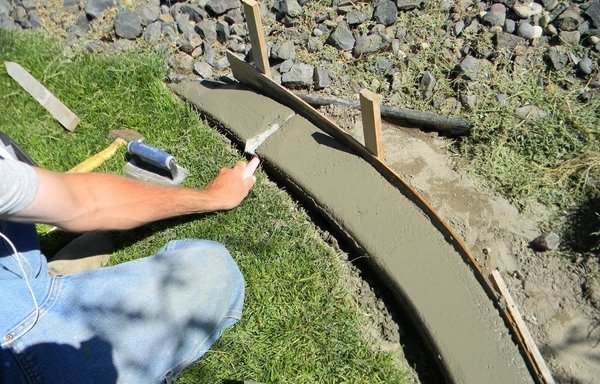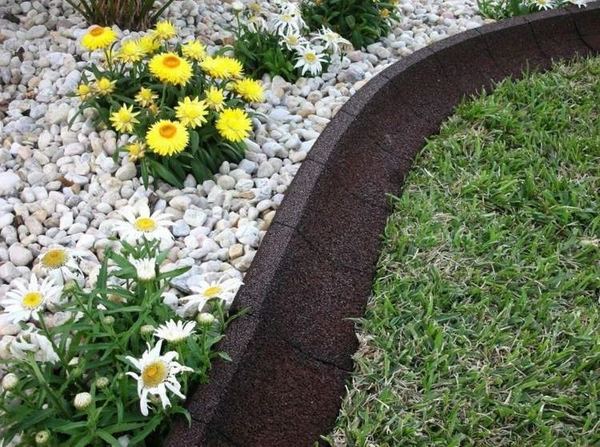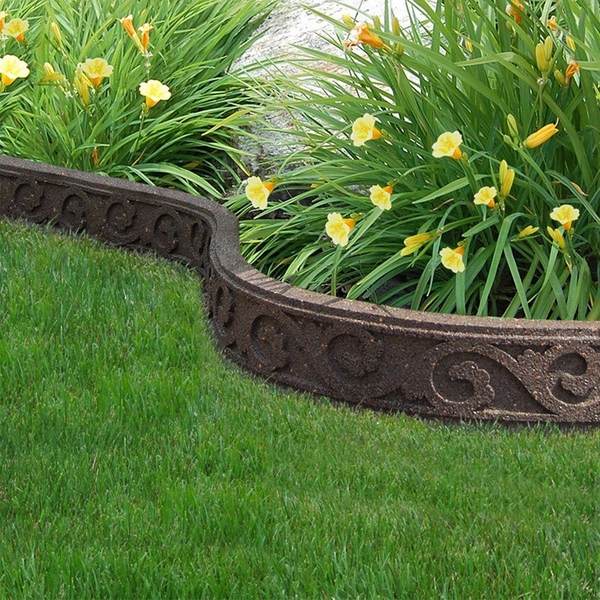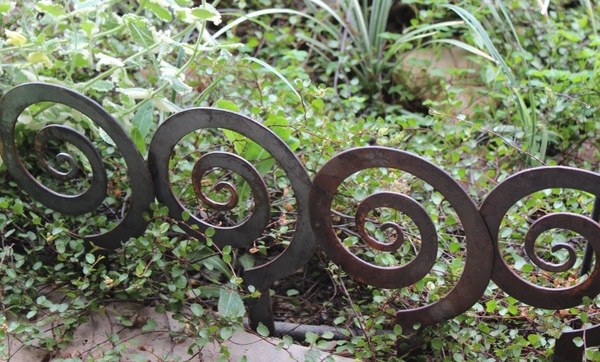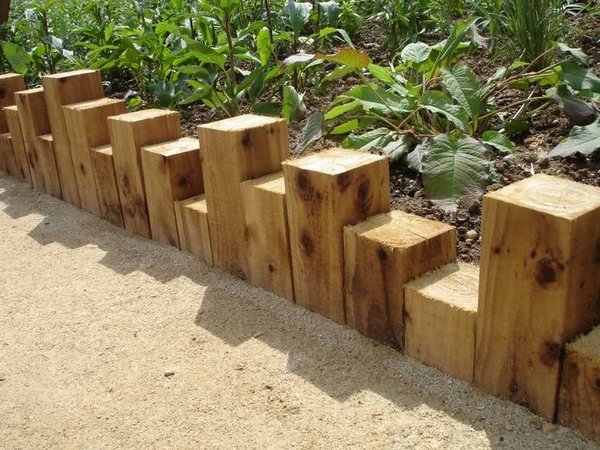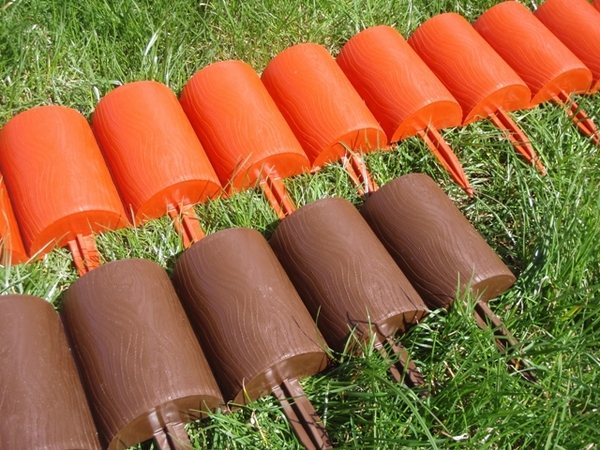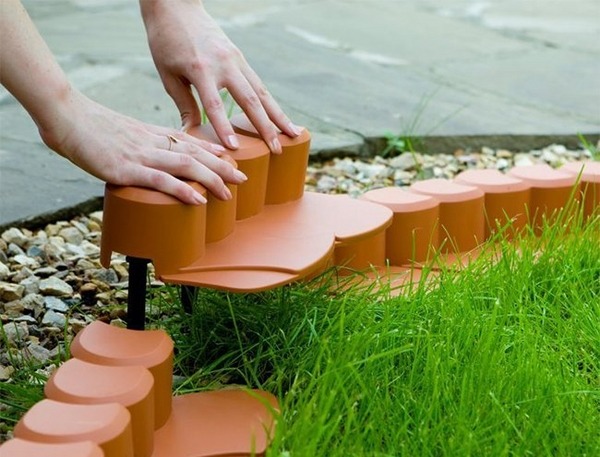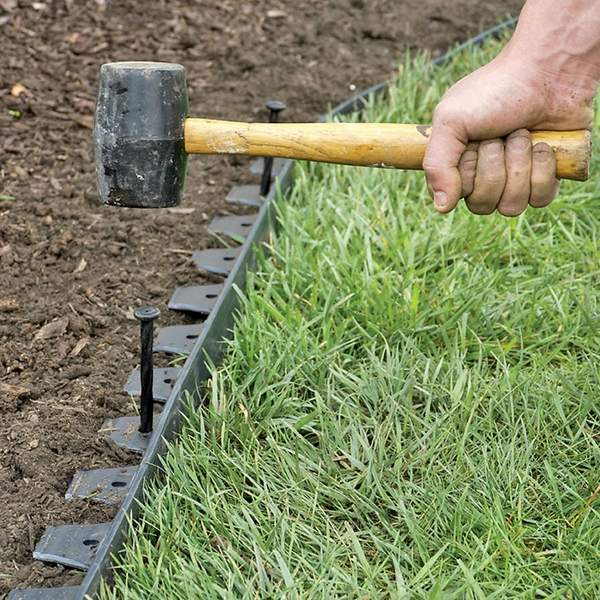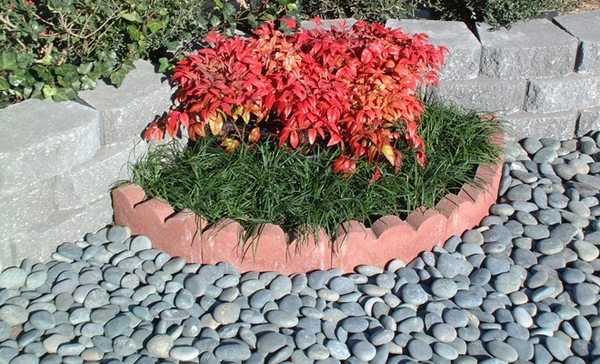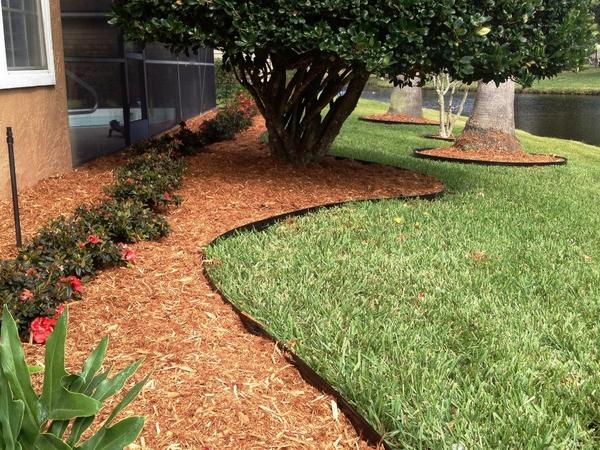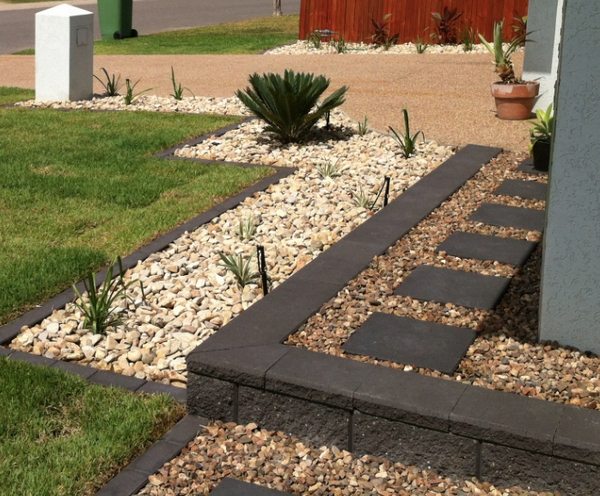Whether small or large, the lawn and flower beds are important elements in the garden. They require a constant maintenance and care so that the garden looks inviting and makes an attractive impression. Designers, decorators and landscape architects will tell you that even the smallest details are important and add to the overall concept. We have some great examples of garden edging ideas which define the edge between the flower beds and the lawn. Garden edges create lines in the landscape – straight, curved, wavy, geometric, and the lines add to the finished look and a sense of clarity to any area.Garden edges can be made from different materials or none at all, and the choice of material will depend on your personal taste, the exterior design concept, the overall landscape design, etc.
Garden edging ideas – the natural look of trench edging
Digging a trench is one of the most traditional and easy garden edging ideas which requires no finance but just some labor. You can use the good old spade or a special tool with a circular blade on wheels. Edging tools come very useful for large gardens where lots of maintenance is required. Trench edges look very natural as there is no any visual or physical barrier between the lawn and the flower beds. However, trench garden edges need constant maintenance –weeding, shaping, etc.
Garden edging ideas from different materials
One of the simplest and good looking garden edging ideas is to use wood as a garden edge. Wood logs, wood slats, salvaged wood, reclaimed wood, etc. Wood is traditional, good looking, adds lots of charm and character to the landscape design and works with almost any design style. Wood provides numerous opportunities to make fantastic garden edges with great visual appeal and any shape – straight, curved, geometric, angular. In addition, wood is strong enough to hold larger rock pieces and you can combine wood edges with gravel, pebbles, boulders, etc. Experts recommend to use pressure-treated wood or landscape timber as it is more durable and resistant to elements.
Pavers and bricks are an eye catching option for edges. They are simple, attractive borders and offer a lot of visual appeal and aesthetics. Brick and pavers edging allows you to keeps grass out of the garden as well as prevent flowers and other plants intrude onto the grass. They are strong and durable which means that you cannot chip them with the lawn mower. You can arrange bricks and pavers in various decorative patterns which will add to the fabulous look of the garden. The options are many and you can choose concrete pavers, granite or any other type which will work with the exterior design of your house.
Garden edging ideas with natural stone
Garden edging ideas with natural stone look really beautiful and an edge of natural stone is a nice addition to the design of the garden. There are no strict rules for the size of stones and the only limit is the imagination. You can combine stones of different sizes to create beautiful garden edges with a natural or elegant design. Further to that, stone garden edges are an excellent idea for people who are attracted to the DIY projects as laying the stones is not such a difficult task and does not require special skills. You do not have to use mortar, you can use sand, pea gravel or pebbles to fill the gaps between the stones and give a more artistic look to the garden.
Metal garden edging is a good alternative and can help you make the perfect edge. Garden edging made of metal adds to the better appearance of outdoor living and the most important, you can use recycled materials at an affordable cost. Metal edges are available in aluminum, stainless steel or galvanized steel. Aluminum is lightweight and works beautifully in contemporary landscaping. Aluminum edging is cheaper than iron and steel and this is one of the main reasons why it is a popular option. Metal edging is flexible and a good option when you want round or curved garden edges. An advantage of metal edges in the garden is that you do not have to dig the soil, to install them into the ground. Usually you will only need a hammer to install the edging into the ground easily. This also saves a lot of time and effort. Use a rubber mallet to avoid damaging the metal.
In the group of metal garden edging is the wrought iron garden edging which offers a lot of charm, style and visual aesthetics. There are many unique classic designs which are an eye catching addition to the flower beds. Wrought iron is very durable and long-lasting. The wide variety of designs makes sure that every homeowner will find something to suit his tastes. Wrought iron garden edging works with many design styles – rustic, traditional, shabby chic, Mediterranean, etc.
Plastic and rubber garden edging are not only environmentally friendly, but also a cheaper option. The edging is made of recycled materials and offers quality and performance at an economical price. Plastic and rubber edging will give a finished look to the flower beds and can be easily installed in an afternoon. The advantage of this type of garden edging is the resistance to moisture, snow, rain and sun. Plastic and rubber edging does not rust, but you should know that lower grade materials can become fragile over time.
Concrete garden edging is a way to create original custom made borders with unusual design. You can use either concrete blocks, pre-fab garden borders or pour concrete for more unusual designs. Again, concrete can be used for geometric, curved, round or angular edging and works especially well in contemporary and minimalist exterior designs. You can add a pigment if you wanted a custom color for your garden edges.
Whichever option you choose, make sure that the garden edging works with the exterior, the house architecture and the overall design style, so that the outdoor area looks pleasing to the eye, welcoming and inviting.

